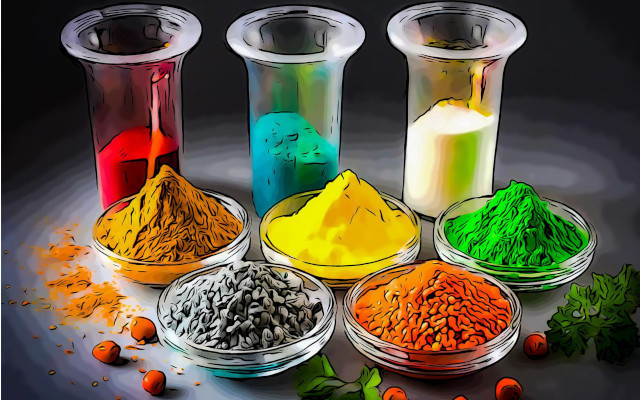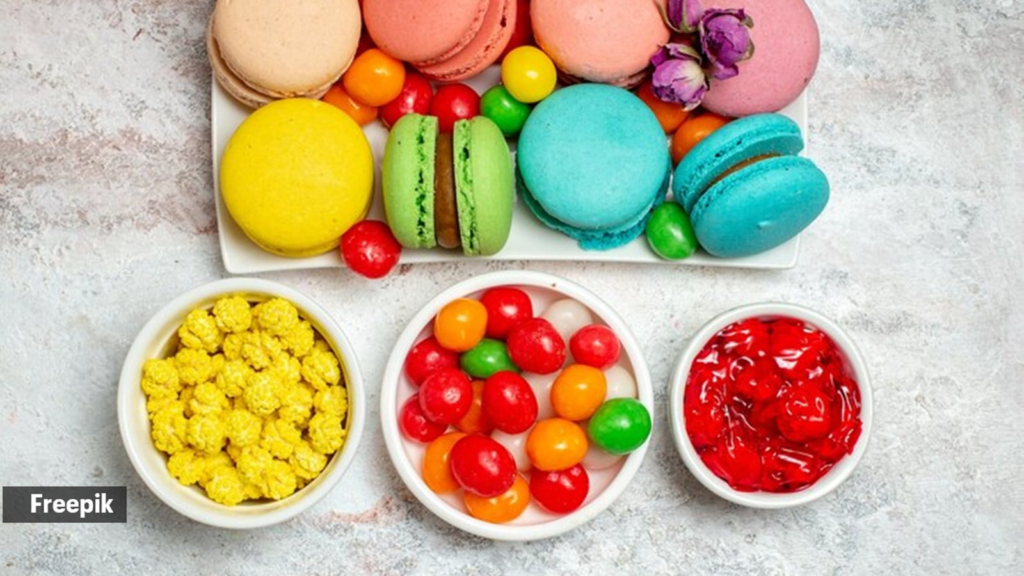Artificial food dyes have long been used to make foods more colorful and attractive. From bright red candies to neon-colored drinks, these synthetic colors have become a staple in processed foods. But recent studies and growing health concerns are bringing these dyes under increased scrutiny, raising questions about their safety, especially for children. As a result, food safety advocates, scientists, and consumers are calling for stricter regulations and better labeling practices.
What Are Artificial Food Dyes?

Artificial food dyes are synthetic chemicals developed to enhance or add color to food and drinks. Some of the most commonly used dyes in the U.S. include Red 40, Yellow 5, and Blue 1. These dyes are derived from petroleum and are approved by the Food and Drug Administration (FDA) for use in various foods, beverages, medications, and even cosmetics.
They are particularly popular in products aimed at children — such as cereals, candies, sodas, and desserts — due to their vibrant and appealing colors. However, just because they’re FDA-approved doesn’t mean they are completely safe for everyone.
Mounting Health Concerns
Several scientific studies have raised red flags about the potential health risks linked to artificial food dyes. Researchers have found possible connections between these dyes and a variety of health problems, including:
- Hyperactivity and behavioral issues in children
- Allergic reactions
- Potential links to cancer in animal studies
- Immune system disruption
A 2021 report by the California Office of Environmental Health Hazard Assessment concluded that synthetic food dyes can cause or worsen attention-deficit/hyperactivity disorder (ADHD) symptoms in children.
The American Academy of Pediatrics has also acknowledged growing evidence that food dyes may affect some children’s behavior, leading parents to question whether brightly colored snacks are worth the potential risk.
Global Response: How Other Countries Are Acting
The concern isn’t limited to the United States. Many other countries have taken stricter approaches to artificial food dyes. In the European Union, for example, several artificial dyes are banned or require warning labels that state: “May have an adverse effect on activity and attention in children.”
Countries like the UK, France, and Norway have pushed for natural alternatives and discouraged the use of synthetic colorants in processed foods. As a result, multinational companies like Kraft and McDonald’s have been forced to change their dye ingredients in European markets.
Ironically, the same companies often continue to use synthetic dyes in U.S. products, due to laxer regulations and less consumer pressure.
FDA’s Stance and Lack of Updates
The FDA continues to permit the use of artificial food dyes, stating that they are safe when used within approved limits. However, critics argue that most of the research the FDA relies on is outdated or industry-funded.
“There is growing public concern, but the FDA hasn’t significantly updated its dye regulations since the 1990s,” says Dr. Lisa Lefferts, senior scientist at the Center for Science in the Public Interest (CSPI). “We need more independent studies and greater transparency.”
CSPI has long advocated for the removal of synthetic dyes from foods, citing behavioral risks in children and lack of adequate safety reviews.
Calls for Action and Consumer Awareness
Health experts and advocacy groups are urging lawmakers and regulators to take a stronger stance on synthetic dyes. Proposed actions include:
- Mandatory labeling that clearly identifies artificial dyes
- Public health campaigns to educate parents
- Encouraging manufacturers to switch to natural alternatives
- More funding for independent scientific studies
Consumers also play a key role. As awareness spreads, many are choosing products with labels like “No Artificial Colors” or “Naturally Colored.” The rise of organic and natural food brands has created market competition, forcing big players to reconsider their formulas.
“We’ve seen that when people are educated, they make different choices,” says nutritionist Karen Diaz. “The shift starts with the shopper.”
Natural Alternatives: A Brighter Future?

There are many natural alternatives to synthetic dyes that come from fruits, vegetables, and plants. For example:
- Beet juice for red
- Turmeric for yellow
- Spirulina for blue
- Carrot juice for orange
Many major food companies are already exploring these options. For instance, General Mills removed artificial colors from its cereals and replaced them with vegetable and fruit-based dyes.
Despite being slightly more expensive and sometimes less stable in appearance, these natural dyes are gaining popularity due to health-conscious consumers.
What Can You Do as a Consumer?
If you’re concerned about artificial food dyes, here are a few steps you can take:
- Read food labels carefully – Look for names like Red 40, Yellow 5, and Blue 1
- Choose natural or organic brands that use plant-based coloring
- Reduce intake of ultra-processed foods, especially those targeted at kids
- Spread awareness among friends and family
While the FDA has not banned these dyes, your individual choices can drive change in the food industry.
Final Thoughts
Artificial food dyes are increasingly being scrutinized due to growing health concerns, especially their potential impact on children’s behavior. As other countries take a firmer stance, U.S. regulators face pressure to reconsider their position. In the meantime, consumer awareness and demand for natural alternatives are already shaping the market.
To learn more about food dye safety and current research, visit the Environmental Working Group’s Food Scores database or check out the Center for Science in the Public Interest for updates and advocacy efforts.
Also Read – McDonald’s Reveals Big Store Changes to Attract More Customers






